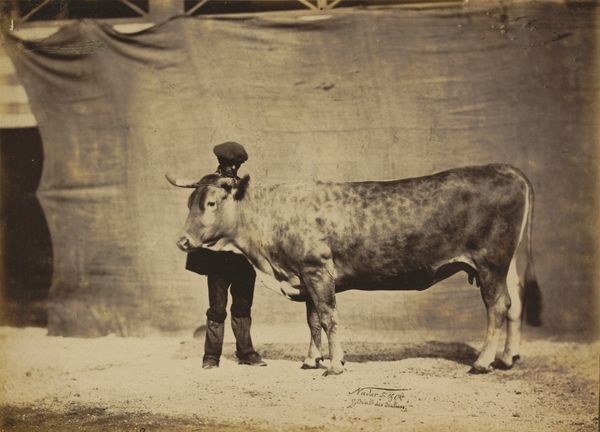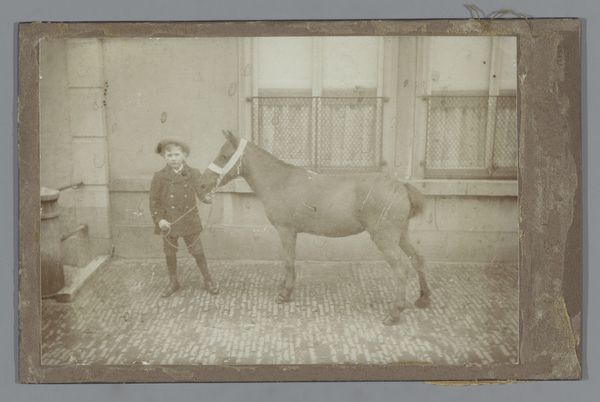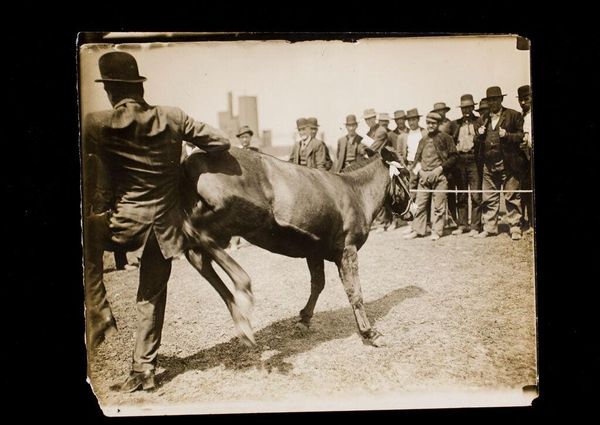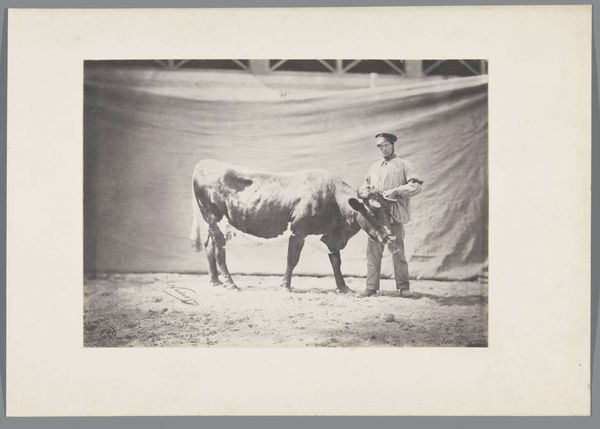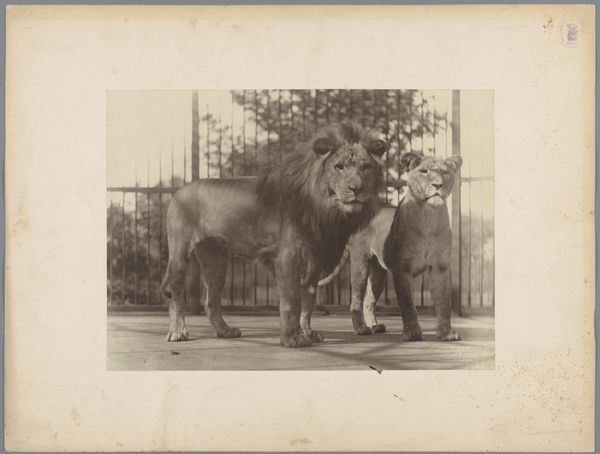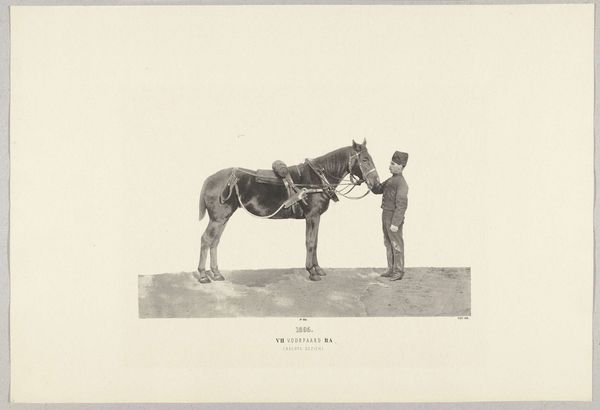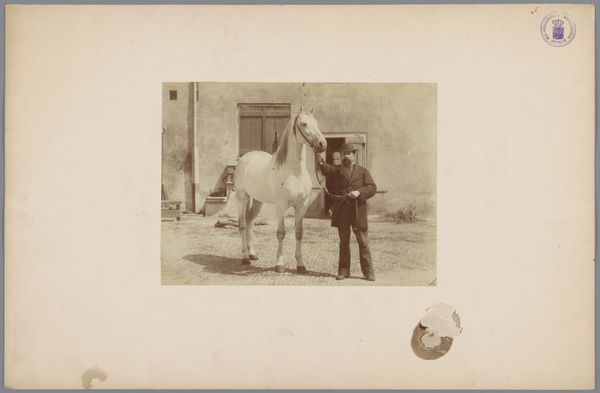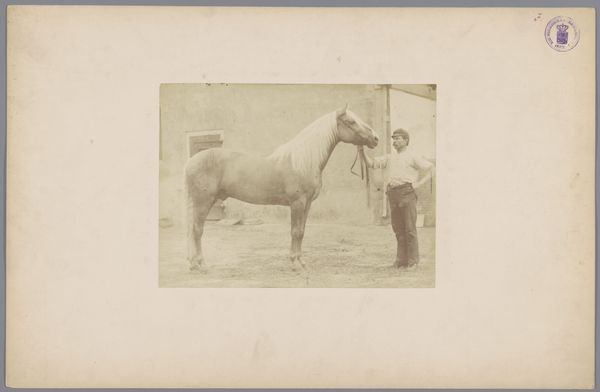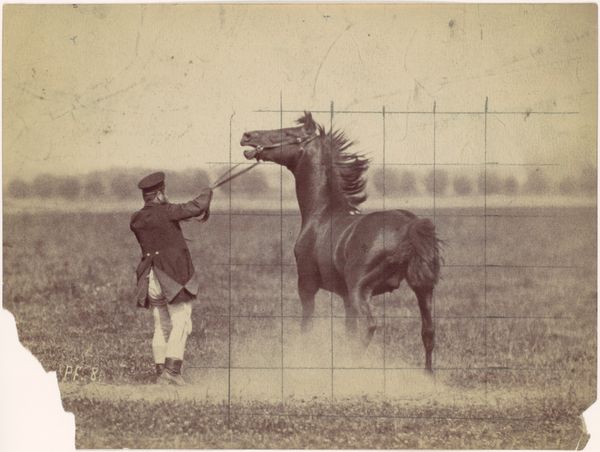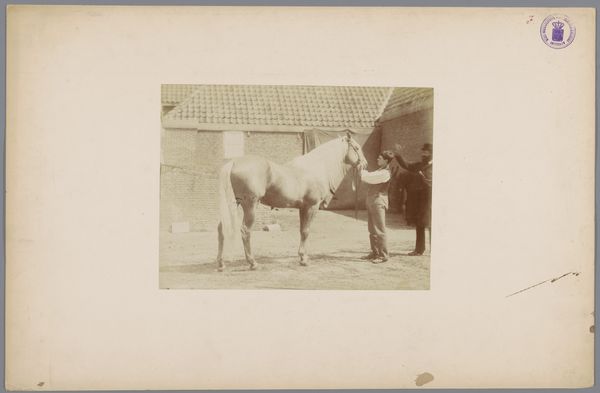![[Bull from Glane, Canton of Fribourg] by Adrien Tournachon](/_next/image?url=https%3A%2F%2Fd2w8kbdekdi1gv.cloudfront.net%2FeyJidWNrZXQiOiAiYXJ0ZXJhLWltYWdlcy1idWNrZXQiLCAia2V5IjogImFydHdvcmtzL2VhZjQwN2I2LWJhMTAtNDgwOC1hNjE5LTczYzM3YWYzZmEyNi9lYWY0MDdiNi1iYTEwLTQ4MDgtYTYxOS03M2MzN2FmM2ZhMjZfZnVsbC5qcGciLCAiZWRpdHMiOiB7InJlc2l6ZSI6IHsid2lkdGgiOiAxOTIwLCAiaGVpZ2h0IjogMTkyMCwgImZpdCI6ICJpbnNpZGUifX19&w=3840&q=75)
photography, gelatin-silver-print
#
portrait
#
print photography
#
16_19th-century
#
animal
#
landscape
#
archive photography
#
photography
#
historical photography
#
gelatin-silver-print
#
men
#
realism
Dimensions: Image: 7 1/2 × 10 9/16 in. (19.1 × 26.8 cm) Mount: 10 5/8 × 12 13/16 in. (27 × 32.5 cm)
Copyright: Public Domain
Curator: Looking at this photograph, “Bull from Glane, Canton of Fribourg” taken around 1856 by Adrien Tournachon, you’re immediately struck by the sheer physicality of the animal, aren't you? Editor: It certainly is imposing. But I am curious about the man standing so close. He seems dwarfed, yet there’s also this visible dynamic of control. It sparks a wider inquiry into labor, exploitation, and our relationship with animals—what can you tell me about it? Curator: The work is a gelatin-silver print from an archive that straddles high art and something more utilitarian. Think about 1856 – photography was still finding its place. Tournachon, while experimenting with portraiture, captures the musculature, the build of this prized bull in almost clinical detail. Editor: Clinical is right, almost detached. But also consider the power structures implicit here. A prized animal—its literal value judged based on its physical presence. It really mirrors broader social valuations of the time: who, and what, is deemed valuable and why? What about the socio-economic landscape this was created within? Curator: Well, Switzerland at that time was still very agrarian. The canton of Fribourg was known for its cattle breeding. I think this piece acts as both record and a testament to local industry and labor. The man’s holding the bull represents husbandry itself—the raw labour of it. Editor: The subdued color palette of this gelatin print contributes to that sentiment of historical distance. It emphasizes not just the bull as an object, but the cultural narratives intertwined with animal husbandry. Also it prompts reflections on exploitation and industrialization's looming presence in rural life. I wonder about what Tournachon truly intended. Curator: Regardless, looking at it from a materialist angle, this photograph beautifully demonstrates how even simple materials combined with human effort can turn ordinary subject matter into extraordinary works that hold societal weight. Editor: And how analyzing such works allows one to ask harder questions. Art as not just document, but mirror, reflecting social relations of power and commodification of life. That dialogue it sets up between then and now I find invaluable.
Comments
No comments
Be the first to comment and join the conversation on the ultimate creative platform.
